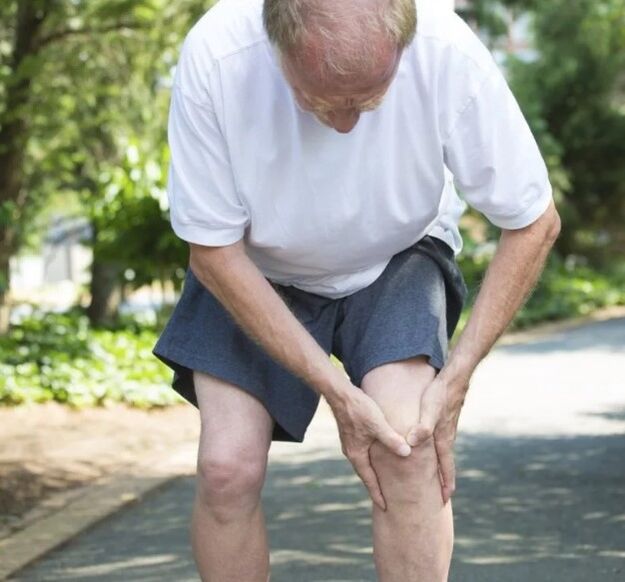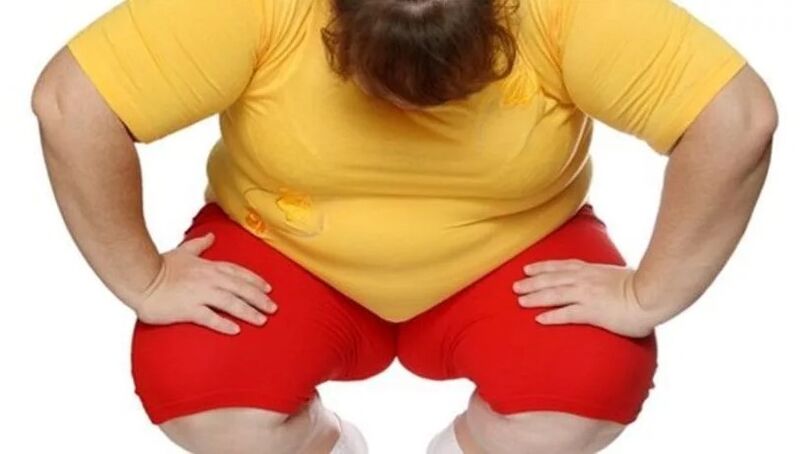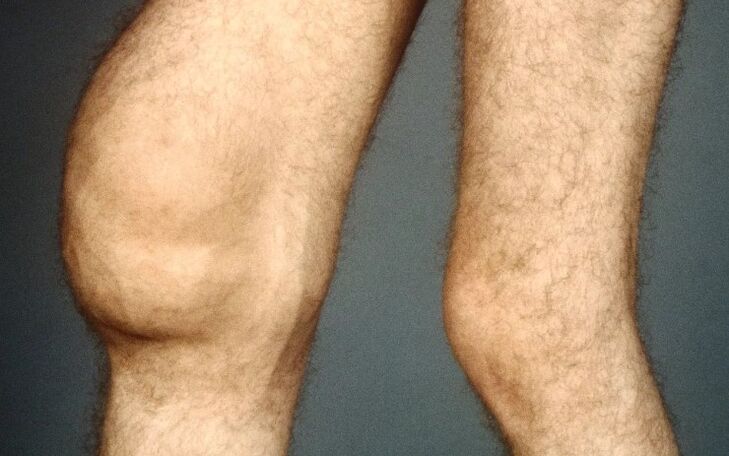Arthrosis is a chronic joint disease in which the cartilage of the joints is progressively destroyed.When the cartilage is destroyed, changes arise in the bone covered by the cartilage, and in the joint capsule.However, this description is not completely accurate, because with arthrosis in the joints there are some changes in inflammation.In our country that triggers English, our "arthrosis" in most cases is called arthritis (arthrithis), which is an inflammatory joint disease (suffix), while we are commonly called arthritis, joint damage in rheumatic disease,

In modern scientific articles, the term osteoarthrosis is more commonly found (from the "osteo"inflammation of the joints and bones).And again, in the countries that are experienced in English, "Ostose" Ostose is called osteoarthritis (osthearthrithis), which is joint and bone inflammation.In fact, arthrosis and arthritis are synonymous, and your doctor is talking about the same.
As we have noticed initially, with arthrosis (osteoarthrosis), the cartilage is progressively destroyed, and the bone is gradually involved in the process.With arthrosis in the bone, the section of sclerosis (compaction) first occurs, as a result of the loss of shock -absorbing properties.Then there is an indicator along the bone (exostosis), which is often misunderstood "
salt deposit
"- In fact, with ordinary arthrosis, there is no salt.With further illness, the bone begins to bend, deformation, cyst in it: often the disease is called
summarizing arthrosis (osteoarthrosis).In the books of old medical books, sometimes you can find the phrase "Disfiguring Arthrosis", but now it's almost never used." - Sebenarnya, dengan arthrosis biasa, tidak ada garam garam. Dengan penyakit selanjutnya, tulang mula membengkok, ubah bentuk, sista di dalamnya: selalunya penyakit itu dipanggilmeringkaskan arthrosis (Osteoarthrosis). Dalam buku -buku perubatan lama, kadang -kadang anda dapat mencari frasa "Disfiguring Arthrosis", tetapi sekarang ia hampir tidak pernah digunakan.

The true cause of the development of arthrosis is considered unknown for a long time, so there are other names for this disease - idiopathic arthrosis , that is, arthrosis, which arises for unknown or spontaneous reasons.Of course, scientists are no longer considering arthrosis to the mystery and the reasons for their development.More about the causes of arthrosis, about the main and secondary arthrosis below. The arthrosis more often affects the joints -the maximum load (hips, knees, ankle joints, hand joints).Arthrosis of the hip joint is called coxarthrosis (from the word "Coxa" - hip), ankle joint - crurosteoarthritis ("crueuris" - lower leg), knee -
gonarthrosis ("Gen" - knee).In most cases, arthrosis affects both knee joints, while one joint can be destroyed.In this case, the diagnosis sounds like a two -way gonarthrosis with the main damage to the right knee joint (or left). Usually, not one, but some joints are influenced by arthrosis, so they use other terms -
polyosteoarthrosis which means three or more joints (two symmetry, for example, both knees, and some others).In this case, the diagnosis usually sounds as follows: polyosteoarthrosis with major damage to the knee joint (or one of them). Why arthrosis of the knee joint occurs?
Knee joint arthrosis is different.Depending on the cause of the occurrence, primary and secondary arthrosis is distinguished.With age, cartilage updates slows down and the destruction of cartilage, called degradation or degeneration, begin to win.
Arthrosis sendi lutut adalah berbeza. Bergantung kepada sebab -sebab kejadiannya, arthrosis primer dan sekunder dibezakan.
Arthrosis utama sendi lutut
Rawan artikular sentiasa dimusnahkan dan dikemas kini, dan biasanya proses -proses ini seimbang. Dengan usia, kemas kini tulang rawan melambatkan dan pemusnahan tulang rawan, yang dipanggil proses degradasi atau degenerasi, mula menang.
The process of synthesis and destruction of cartilage is usually balanced.If degeneration begins, then the arthrosis of the knee joint begins
In most cases, the deterioration of the cartilage, the development of arthrosis, occurs after 45-50 years, but sometimes arthrosis can develop in 20 years.Fortunately, the development of arthrosis at a young age is extremely rare.As a rule, if arthrosis occurs, then at the age of 40-60, and if at age 60 there is no arthrosis, then most likely it will not be, or rather, arthrosis will be insignificant (certain degenerative changes in the knee joint are found in all parents, but they are expressed differently).Not everyone feels their knees as a problem.This is especially true for men who are often "serious" arthrosis does not show themselves or cause minimal difficulties.The main arthrosis occurs spontaneously, that is, without the factor of launch, so it is called idiopathic, which we have said before.

Therefore, we know that age is one of the main factors that determine the development of arthrosis, as the process of degeneration of the cartilage begins with age.Every fourth person is over 55 years old suffering from knee joint arthrosis.But we also say that with age, arthrosis does not develop in everyone.So there's another reason.Before we list them, we note that there are no main reasons, the main.Knee joint arthrosis develops for reasons, while some play a major role, while others - less.
Arthrosis utama berlaku secara spontan, iaitu tanpa faktor melancarkan, oleh itu ia dipanggil idiopatik, yang kita cakap sebelum ini.
Oleh itu, kita telah mengetahui bahawa usia adalah salah satu faktor utama yang menentukan perkembangan arthrosis, kerana proses degenerasi tulang rawan bermula dengan usia. Setiap orang keempat berusia lebih dari 55 tahun menderita dari arthrosis sendi lutut. Tetapi kami juga menyatakan bahawa dengan usia, arthrosis tidak berkembang dalam semua orang. Jadi ada sebab lain. Sebelum kita menyenaraikan mereka, kita perhatikan bahawa tidak ada sebab utama, utama. Arthrosis sendi lutut berkembang dari segi sebab, sementara ada yang memainkan peranan yang besar, sementara yang lain - kurang.
Floor. Often, women's joints are experienced by women.The right reasons for this are unknown, but you can try to explain the following reasons.Flat -rata, women's life expectancy is greater than men, and, thus, average old woman will state the degenerative process.In addition, weight in flat -female is slightly higher.Bone size in women is smaller than men, and, coupled with higher weight, this leads to higher pressure on the knee joint, and, thus, more intense mechanical cartilage destruction.In the majority of large cases in women, arthrosis begins to appear after menstrual cessation, and, perhaps, estrogen deficiency determines the development of arthrosis.Note that attempts to treat knee joint arthrosis in women after menopause by estrogen, of course, have been done, but so far they have not succeeded.
Of course, the larger the weight, the larger the burden should be transferred to our knee joints.In addition, weight loss reduces physical activity and leads to hip muscle weakness.For more active cartilage synthesis, movement (without excessive pressure) is necessary, and with an inactive lifestyle, the cartilage cartridge process begins.The hip muscles are an important stabilizer of the knee joint, and with these muscle weakness, the movement of the knee joint becomes more painted, which accelerates the destruction of cartilage.In general, these processes can be described as a demonic circle: the larger weight, the faster the knee joint is destroyed, the larger the pain, the harder to move, which again leads to excess weight.Sudah tentu, semakin besar berat badan, semakin besar beban harus dipindahkan ke sendi lutut kita. Di samping itu, kelebihan berat badan mengurangkan aktiviti fizikal dan membawa kepada kelemahan otot pinggul. Untuk sintesis rawan yang lebih aktif, pergerakan (tanpa tekanan berlebihan) adalah perlu, dan dengan gaya hidup yang tidak aktif, proses kartrij tulang rawan mula berlaku. Otot pinggul adalah penstabil penting dari sendi lutut, dan dengan kelemahan otot -otot ini, pergerakan di sendi lutut menjadi lebih dicat, yang mempercepat pemusnahan tulang rawan. Secara umum, proses -proses ini boleh digambarkan sebagai lingkaran setan: semakin besar berat badan, semakin cepat sendi lutut dimusnahkan, semakin besar kesakitan, semakin sukar untuk bergerak, yang sekali lagi membawa kepada berat badan yang berlebihan.

Violent Circles of Obesity and Knee Joint Arthrosis
On the other hand, only knee joint arthrosis only develops in complete people - those who do not have obesity can also experience arthrosis.Again, this is because arthrosis has no reason.
It has long been observed that knee joint arthrosis is a "family" disease.If you have arthrosis or your parents, unfortunately, the probability of the disease is high with you.Scientists have discovered many of the gene characteristics responsible for, for example, individual features of the cartilage of cartilage - collagen, but, unfortunately, so far these findings have no practical importance, as we cannot affect the prevention or treatment of arthrosis.There is evidence that arthrosis heritage is spread throughout the female line, which partly describes their great tendency to the disease. The main arthrosis of the knee joint does not occur for just one reason, but only with the whole.At the same time, knee joint arthrosis is one degree or another in almost 60 people, but the severity of the arthrosis is very different, and not always the arthrosis of the radiography shows itself.In fact, it is more difficult: there is no pain in the knee joint in the elderly or, moreover, at the age of 40-60, it will be accompanied by changes in arthrosis radiographic characteristics.
For example, scientists have found that 76% of parents with complaints of pain in the knee in radiography find arthrosis.
That is, no pain in the knee joint in the elderly is necessarily knee joint arthrosis.Iaitu, tidak ada kesakitan pada sendi lutut pada orang tua semestinya arthrosis sendi lutut.At the same time, among all parents with knee joint arthrosis in radiography, only 81% will complain about pain. That is, no arthrosis is available.It occurs that changes in the radiography are not important, and the pain is strong, and it occurs the opposite: the joints are completely destroyed in the radiograph, and one can ride a bicycle, engage in yoga, work as constant, and such cases we meet almost every day.The blue arrow marks the outside of the joint, and the orange - the inside of the joint.Pay attention to how the gap between the bones is from the inside: the cartilage is invisible to the radiograph, and this gap means the cartilage.In this case, no cartilage left on the inside of the knee and bone joints is rubbed on the bone.Because arthrosis often affects both knee joints, that is, it is bilateral, both feet begin to twist, and O-shaped foot (variable deformation).
Sebenarnya, tidak ada sambungan wajib tentang keterukan kesakitan dengan keterukan arthrosis sendi lutut pada radiografi. Ia berlaku bahawa perubahan pada radiografi benar -benar tidak penting, dan kesakitannya kuat, dan ia berlaku sebaliknya: sendi dimusnahkan sepenuhnya pada radiografi, dan seseorang boleh menunggang basikal, terlibat dalam yoga, bekerja sebagai malarus, dan kes -kes seperti itu kita bertemu hampir setiap hari.

Selalunya, arthrosis sendi lutut bermula dengan jabatan dalaman (medial).
Radiografi sendi lutut yang terjejas oleh arthrosis dari dalam. Anak panah biru menandakan bahagian luar sendi, dan oren - bahagian dalam sendi. Beri perhatian kepada bagaimana jurang antara tulang adalah dari bahagian dalam: tulang rawan tidak dapat dilihat pada radiografi, dan jurang ini yang bermaksud tulang rawan. Dalam kes ini, tidak ada tulang rawan yang tersisa di bahagian dalam sendi lutut dan tulang sudah disapu pada tulang.
Dengan lelasan rawan secara beransur -ansur dari bahagian dalam sendi lutut, kaki mula bengkok. Oleh kerana arthrosis sering memberi kesan kepada kedua-dua sendi lutut, iaitu, ia adalah dua hala, kedua-dua kaki mula dipintal, dan ubah bentuk kaki berbentuk O (ubah bentuk varior).
Kurang biasa (kira-kira 10% daripada kes), bahagian luaran sendi dipengaruhi oleh arthrosis, dan dalam kes ini ubah bentuk berbentuk X (Valgus) bermula.
Of course, with curvature, the load on the internal (in the form of O) or the external (in the form of x) the variant of the deformation increases more, and the arthrosis will develop faster and unproofed.
Arthrosis can start not only in the inside or external, but also between knee cups (patella) and inter -design furrow femur.This option is called patello-phomoral arthrosis and it occurs, as a rule, caused by tilt, patello pattern, lateral hyperpression syndrome which is a separate article dedicated to our website or after Patella Fracture , which you can also read in a separate articleNow we will talk briefly about the options for secondary arthrosis.
Post -traumatic Arthrosis of the knee joint.
Knee joint injury, of course, does not increase the health joints and almost everything, one way or another, increases the risk of arthrosis.Unfortunately, any of the people with a meniscus gap have the possibility of developing arthrosis.If the medial meniscus (internal) is damaged, then arthrosis prefers to develop inside the knee joint.And, thus, if the external meniscus fraction, arthrosis will develop in the outer joints of the joints.Note that the breakdown of meniscus does not necessarily lead to arthrosis, the probability of development of AULS.Of course, the more meniscus are damaged, the higher the risk of arthrosis.
Post -traumatik arthrosis sendi lutut. Kecederaan sendi lutut, tentu saja, tidak menambah sendi kesihatan dan hampir semuanya, satu cara atau yang lain, meningkatkan risiko arthrosis.
Salah satu kecederaan yang paling biasa dari sendi lutut adalah pecah Menisci, yang dikhaskan untuk artikel berasingan di laman web kami. Malangnya, mana -mana orang yang mempunyai jurang Meniscus pernah mempunyai kemungkinan untuk membangunkan arthrosis yang pernah ada. Sekiranya meniskus medial (dalaman) rosak, maka arthrosis lebih suka berkembang di bahagian dalam sendi lutut. Dan, dengan itu, jika pecahan meniskus luaran, maka arthrosis akan berkembang pada sendi luar sendi. Perhatikan bahawa pecah meniskus tidak semestinya membawa kepada arthrosis, kebarangkalian pembangunannya AULS. Sudah tentu, semakin meniskus rosak, semakin tinggi risiko arthrosis.

Another reason for the development of knee joint arthrosis is ligaments rupture, for example, front ligament cruciate rupture.As a result of the rupture of the ligaments in the joints, instability may occur, which, of course, can cause damage to the cartilage and the development of arthrosis.Of course, cartilage damage depends on the degree of instability, which can vary.Almost any intra -articular fracture is accompanied by a displacement of debris, and therefore, the form of articular surface changes.The steps that arise as a result of the transition is inevitable leading to the destruction of cartilage and the appearance of arthrosis.Of course, the heavier the fractures, the larger the intraarticular fractures of the debris, the more cartilage is damaged and the higher risk of arthrosis.After the multi -heavy fractures of tibial condyles, arthrosis develops in almost 100% of cases even though the perfect osteosynthesis surgery is performed (removal of bone fragments and fasteners with screws, plates, etc.)

















































